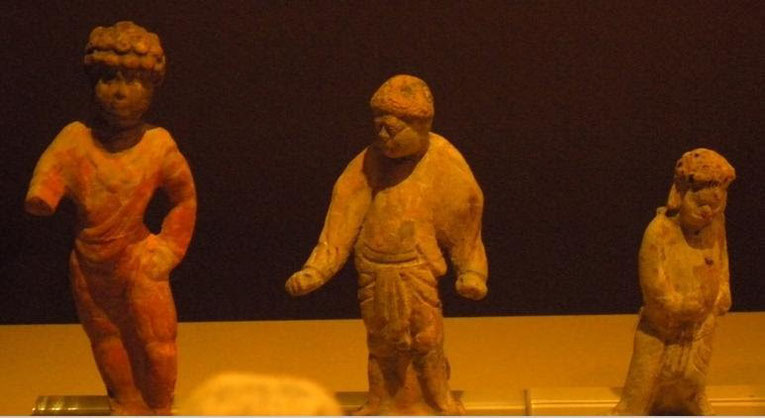
Some statues found in China from Kunlun-nu (slaves) most probably people from South East Asia.
--------------------------------------------------------------------
Yiqiejing Yinyi by Huilin: Chinese Buddhist dictionary; an expanded revision of the original (c. 649) Yiqiejing yinyi compiled by Xuanying 玄應. Huilin's 100-chapter versions constitute the oldest surviving Chinese dictionary of Buddhist technical terminology. Huilin's surname was Pei 裴, and he was born in Shule 疏勒 "Kashgar" (the westernmost city in China). He mentions black Kunlun people most probably from the East-Asian Islands.
Here is found an account of the Kun-Lun people. They are also called Kurung.
The kunlun language: the upper is pronounced kun the lower lun, this commonly used language is ordinarily also called Gulun.
They are the barbarous men of the islands, great and small, of the southern seas. They are very black, and expose their naked figures.
Note: Khmer is Chinese Kap-miet. Turmi is Tuet-mjie. Kurdang is Kuot-d'ang
Note : The Zangis mentioned here might well be the black people in the Indonesian archipelago. (Papua?) There is only one chinese symbol
Taken from: From Baghdad to Baghpur; Sailors and Slaves in Global Asia by Guangtian Ha
Khmer (Gemie) likely refers to the ancient Khmer people in contemporary Cambodia, while Sengqi is often considered a Chinese transliteration of Zanj, the term medieval Muslims used to refer to sub-Saharan East Africans along the Swahili coast. We cannot take the entry at its word: there is no reason for us to believe that Shi Huilin, or the popular usage wherefrom he drew his source, knew how to distinguish among the diverse populations who seemed to share the same skin color, nor can we be sure that a Bantu slave, purchased by medieval Muslim merchants on their voyage, would not have first ended up somewhere in Southeast Asia before they were mixed up with other equally “base and lowly” peoples of dark complexion and sent off to China.
Taken from: Archaeology and Language III: Artefacts, Languages and Texts edited by Roger Blench, Matthew Spriggs
(He is quoting Zhang Yi’s Guangya written in 230 AD and a commentary on the Zhuangzi by Sima Biao d305AD
Expose; bo: the lower is pronounced bo. Sima Biao commenting the Zhuangzi says: The bo are sea-going ships. In the Guangya bo is a sea ship too. They lie
six or seven feet deep in the water. They are fast and can transport more than 1000 men, apart from cargo. They are also called kunlun bo. Many of those who form the crews and technicians of
these ships are Kunlun (Southeast Asian) people. With the fibrous bark of the coconut tree, they make cords which bind the parts of the ship together (…). Nails and clamps are not used, for
fear that the heating of the iron would give rise to fires, (The ships) are constructed by assembling (several) thicknesses of side-planks, for the boards are thin and they fear they woul
break. Their length is over sixty meters (..). Sails are hoisted to make use of the winds, and (these ships) cannot be propelled by the strength of men (alone).
See also: Note on KUNLUN Empire